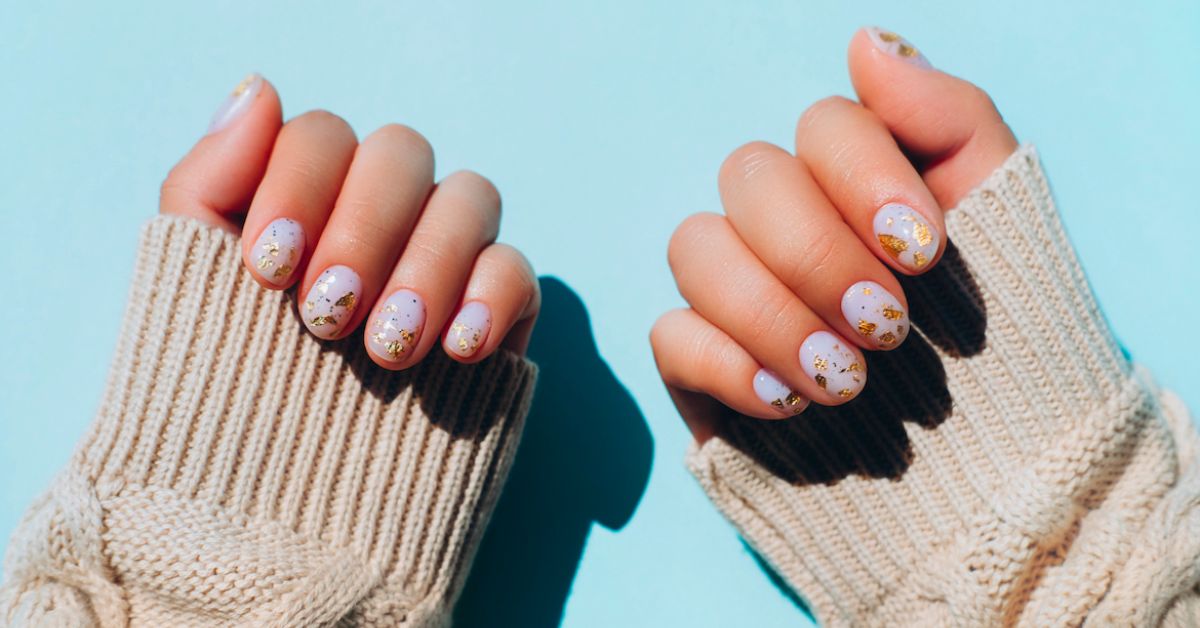What are Nail Wraps Made Of? Uncovering the Stylish Secret
Wondering what are nail wraps made of? You’re in the right place. Nail wraps, with their diverse designs, are a quick and easy way to jazz up your nails. Not only are they a fun alternative to standard nail polish, but they can also offer added protection and strength to your natural nails. In this piece, we’ll dive into the composition of nail wraps and their functionality.
Nail Wraps: The Nitty-Gritty of What They’re Made Of
Nail wraps are thin, yet robust layers of wonder that stick to your nails as if they were born to be there. They comprise four key components:
Polymer Resin
This is the superhero ingredient that gives nail wraps their lasting appeal. A sturdy mix of nylon and polyester fibers form a polymer resin that gives nail wraps their flexible and resilient nature. Thanks to this component, the wrap clings to the nail surface without cracking or peeling, and the high-gloss finish stays put for longer than you’d expect.
Adhesive Layer
The adhesive layer of nail wraps, or as I like to call it, the ‘stickiness factor,’ makes sure the wrap bonds smoothly to your nails. It’s essentially a pressure-sensitive adhesive that attaches to your nail without inflicting any damage. A touch of heat usually brings this layer to life, enabling it to adapt flawlessly to the contours of your nail.
Design Layer
Here’s where the magic happens. The design layer of a nail wrap can consist of various materials like ink, foil, or even glitter. These elements are printed on the polymer resin layer, offering nail wraps their unparalleled creative flair. Besides giving the nail wraps their personality, this layer also creates a barrier against water, oils, and dirt.
Top Coat
To ensure the nail wrap stands the test of time, a top coat is applied over the design layer. This coat, usually clear or tinted, adds an extra layer of armor to the design layer. Besides lending a shiny, glossy finish, it adds longevity to the nail wrap’s lifespan.
So, now that we’ve answered the question, “what are nail wraps made of,” let’s dive into some more detailed topics about these nail wonders.
The Art and Science of Applying Nail Wraps
It’s not just about what nail wraps are made of; how to apply them is equally important. Here’s a step-by-step guide on applying nail wraps to give your nails the makeover they deserve:
- Preparation: Start by ensuring your nails are clean and free from any oil or nail polish. This step ensures the adhesive sticks effectively to your nails.
- Size Selection: Choose the nail wrap that best fits your nail size. It should cover your nail entirely but not overlap onto your skin.
- Heat Activation: Warm up the nail wrap slightly. This activates the adhesive layer, allowing the wrap to mold perfectly to your nail.
- Application: Press the wrap onto your nail, starting from the cuticle and moving towards the tip. Make sure there are no air bubbles.
- Trimming: Remove any excess wrap by trimming it with a nail file. Do this in a downward motion for the best results.
- Sealing: Apply a top coat to seal the wrap onto your nail and extend its lifespan. Remember, patience is key – let the top coat dry thoroughly before using your hands.
The understanding of what nail wraps are made of goes hand in hand with knowing how to apply them. Now that we’ve covered both these aspects, let’s look at some common questions people have about nail wraps.
FAQs
❖ What are the benefits of using nail wraps?
Nail wraps are a fun, hassle-free way to beautify your nails. They offer a range of designs that are often tricky to recreate with regular nail polish. Besides the aesthetic appeal, nail wraps are also kinder to your nails than traditional nail polish, providing added strength and protection.
❖ Can nail wraps be used on artificial nails?
Absolutely! Nail wraps can be applied to both natural and artificial nails. However, it’s essential to ensure that the surface of the artificial nail is clean and free from oil or other residues to ensure the wrap adheres properly.
❖ How long do nail wraps last?
On average, nail wraps can last between one to two weeks, depending on how well they’re applied and cared for. Using a top coat can extend their longevity.
❖ Are nail wraps reusable?
Typically, nail wraps are designed for one-time use. Once they’re removed, the adhesive layer might not stick as effectively.
❖ How do I remove nail wraps?
To remove nail wraps, you can gently peel them off from one corner. If they’re proving a bit stubborn, soaking your nails in warm water can make the process easier.
❖ Can nail wraps damage my nails?
No, nail wraps do not damage your nails if applied and removed correctly. In fact, they offer a layer of protection for your nails against the environment.
❖ Can I apply nail wraps myself?
Absolutely! With a little practice, applying nail wraps can be a breeze. Just follow the steps provided and take your time to get them right.
❖ Can nail wraps replace regular manicures?
Yes, they can! Nail wraps are a fantastic alternative to regular manicures, especially if you’re looking for a quick, mess-free way to decorate your nails.
❖ Are nail wraps safe for kids?
Yes, nail wraps are safe for kids. However, supervision is recommended during application and removal to prevent them from accidentally swallowing any small parts.
❖ Can I customize my own nail wraps?
Many brands offer custom nail wraps. You can send in your design, and they’ll create a nail wrap that matches your vision.
To sum up, nail wraps are versatile, protective coverings for your nails made from polymer resin, adhesive, design layers, and a top coat.
